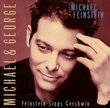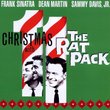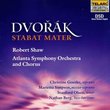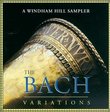| All Artists: Copland, Slatkin Title: Organ Symphony / Dance Symphony / Short Smphony Members Wishing: 0 Total Copies: 0 Label: RCA Release Date: 4/16/1996 Genre: Classical Styles: Forms & Genres, Concertos, Historical Periods, Modern, 20th, & 21st Century, Symphonies Number of Discs: 1 SwapaCD Credits: 1 UPC: 090266829224 |
Search - Copland, Slatkin :: Organ Symphony / Dance Symphony / Short Smphony
 | Copland, Slatkin Organ Symphony / Dance Symphony / Short Smphony Genre: Classical
The Copland known to most people is the composer of scores such as El Salón México, Rodeo, Appalachian Spring, and the Third Symphony--in short, of the popular, approachably folksy works of the years 1936 to 1946... more » |
Larger Image |
CD DetailsSynopsis
Amazon.com The Copland known to most people is the composer of scores such as El Salón México, Rodeo, Appalachian Spring, and the Third Symphony--in short, of the popular, approachably folksy works of the years 1936 to 1946. But what about the music Copland wrote before these defining pieces? Some would say it's even more important, having served to open the door, as Virgil Thomson rightly observed, to "the voice of America in our generation." The four works on this disc show that Copland was Copland--a powerful, provocative, original, and energetic musical personality--before he was "Copland." The daring Organ Symphony of 1924, the same year as Gershwin's Rhapsody in Blue, sounds at least 20 years ahead of its time. The Dance Symphony, from 1929 (but based on material from Copland's 1922 ballet, Grohg), is permeated by the aroma of French modernism and full of the spiky grotesqueries of Stravinsky and Bartók, yet it's got a jazzy swagger that's distinctively ... Copland. Ditto for the Short Symphony of 1933, rhythmically one of the most boisterous pieces Copland ever wrote. Even the one work that appears to be "later" Copland--the Orchestral Variations of 1957--is actually from the same youthful vintage as the symphonies. It's Copland's orchestration of his epoch-making 1930 Piano Variations, among the most powerful utterances in the history of American music. Seventy years later, the force of the musical ideas in this piece still takes listeners' breath away, and reminds us it was no accident that Copland has come to be regarded as America's greatest composer. Leonard Slatkin and the Saint Louis Symphony Orchestra play the spots off all the music on this CD, and the sound is superlative. --Ted Libbey Similarly Requested CDs
|
CD ReviewsInteresting music with some engineering flaws 05/03/2000 (3 out of 5 stars) "For those interested in the more serious works of Copland this Cd is recommended (or atleast the works on it.) The overall sound and performance is good, but there is an excess of bad, noticeable edits. I am sensitive to this being a musician, but I'm not usually disturbed by edits while casually listening to a recording. If you don't think all classical recordings (even "live" ones) are edited A TON, think again...this is no exception, and not very smoothly done." Early Copland Brett A. Kniess | Madison, WI | 11/02/2005 (5 out of 5 stars) "Here on one disk are some early compositions of Aaron Copland: three symphonies and an orchestrated version of the early piano variations. Be forewarned, this is not the "mainstream" Copland, but instead, this is music of a young man who idolized Igor Stravinsky during the time when Schoenberg was all the rage. The Symphony for Organ and Orchestra (Also Symphony No. 1) begins with great yearning and tension (you can tell this is not the Copland we grew up on). The vivacious scherzo greatly recalls Stravinsky, but we can hear the rhythmic vitality which makes Coplands' sound, along with raucous brass and percussion. The finale is a slow, grand march featuring great dissonance and many climaxes. The organ plays its role usually against the orchestra, but all of the moods are portrayed by the instrument, noting especially the wild scherzo portion. The Dance Symphony is music taken from an unperformed opera. The story is about a vampire magician who can make the dead come to life. The work begins featuring a great rising melody and the wind section. There is also a great slinky waltz that makes up the 2nd movement and then dives right into the fast last movement. Again, Copland-isms and Stravinsky-isms abound and another slow slinky waltz infests itself into the exuberant conclusion. The Short Symphony (2nd Symphony) begins in a pointillistic fashion amidst occassional sweeping rising figures in the string section. The lyrical, yet highly dissonant middle portion gives way to a finale which is reminiscent of what will become famous ballet music later in life. While Copland believed that the Piano Variations marked the beginning of his own style, it is still not the Copland we are used to. Orchestrated in 1957 as Orchestral Variations, it features an angular melody with odd intervals and heavy dissonance. Very craggy sounding, variations between the lyrical and tempestuous are judiciously approached; interesting music. The Saint Louis Symphony does play these works very well and Leonard Slatkin is the man to have if you want a lively interpretation. While Leonard Bernstein's performances of these works are probably better (compare on your own), the difference is essentially negligable since these works are offered on one disk. This CD will probably be passed over by many who would much rather have his more famous works, but for the die-hard Copland fans, this CD easily completes the collection." Three Plusses Plus One Minus Moldyoldie | Motown, USA | 04/18/2009 (4 out of 5 stars) "Perhaps surprisingly, this is my introduction to Aaron Copland's Symphony for Organ and Orchestra of 1924, a youthful work composed for his teacher Nadia Boulanger in early 20th century Paris, incorporating many of his now familiar stylistic cross-rhythms and undercurrents of American urban folk music. Beginning pensively mysterious in the opening movement, becoming redolent of neoclassical Stravinsky in the delightful and often blathering scherzo movement, and finally winding down and driving home in a raucousness seemingly steeped in a distinctly French/Russian modernist vein; it actually presents a starkly moving and full-bodied expression which is ear-catching and original.
If one is sympathetic with Copland's developing idiom, the Dance Symphony of 1929 and Short Symphony of 1933 are equally delightful and musically pithy. In the latter work especially, one can hear the marvelous colorations and rhythms that will eventually come to full fruition in his mature ballet and symphonic scores. Though the Orchestral Variations dates from 1957, it's actually an orchestration of his Piano Variations of three decades earlier. While Copland may have felt it to be one of the first works where he garnered his own musical voice, this listener was not so easily enamored. Also, unlike the works earlier on the disc, Slatkin here doesn't seem all that comfortable and confident in his direction, though the playing is committed and intense -- for fans only." |

 Track Listings (10) - Disc #1
Track Listings (10) - Disc #1








